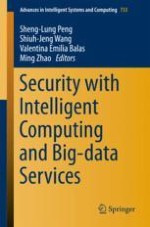2018 | OriginalPaper | Buchkapitel
Feature Extraction in Security Analytics: Reducing Data Complexity with Apache Spark
verfasst von : Dimitrios Sisiaridis, Olivier Markowitch
Erschienen in: Security with Intelligent Computing and Big-data Services
Aktivieren Sie unsere intelligente Suche, um passende Fachinhalte oder Patente zu finden.
Wählen Sie Textabschnitte aus um mit Künstlicher Intelligenz passenden Patente zu finden. powered by
Markieren Sie Textabschnitte, um KI-gestützt weitere passende Inhalte zu finden. powered by
